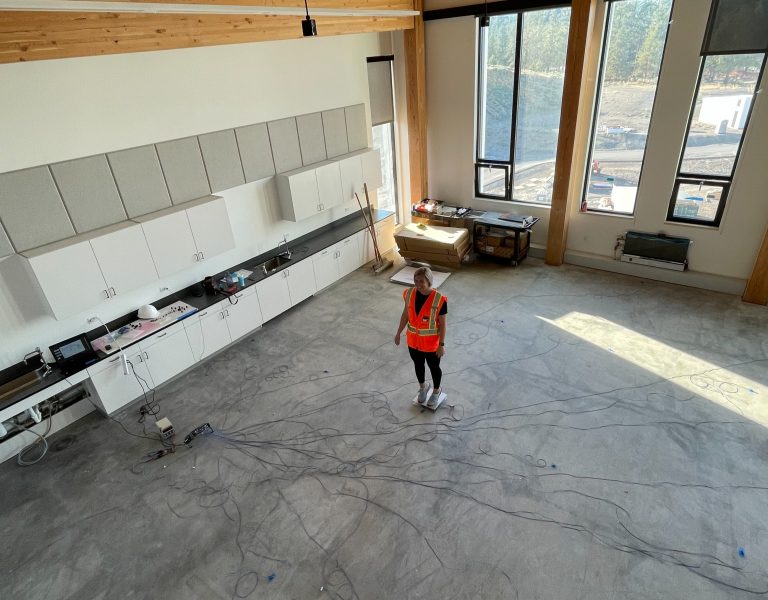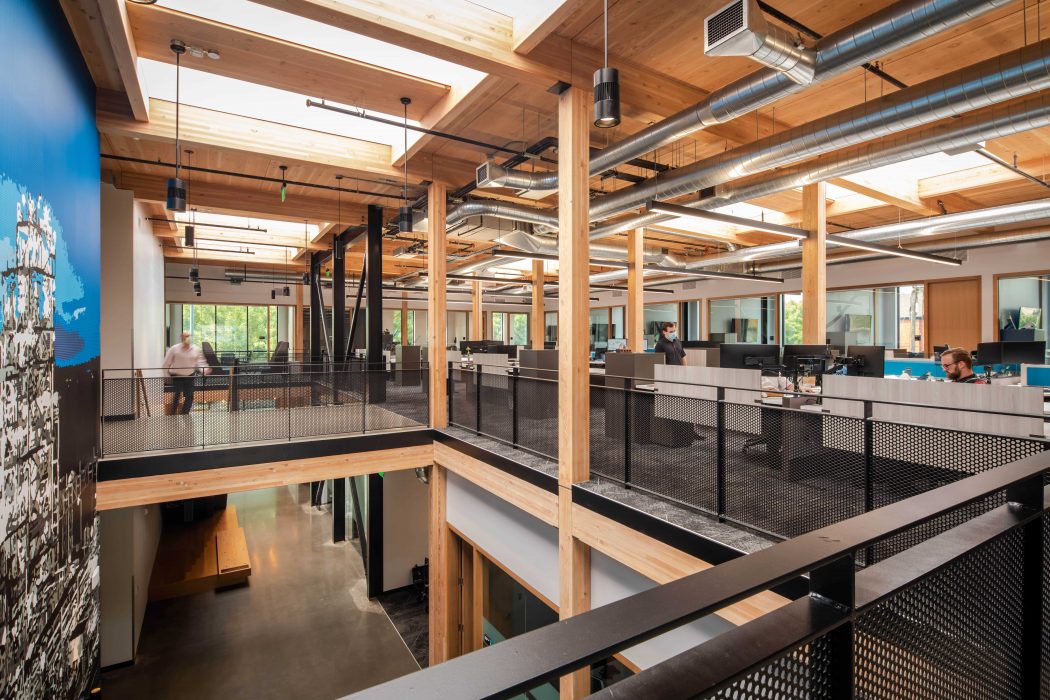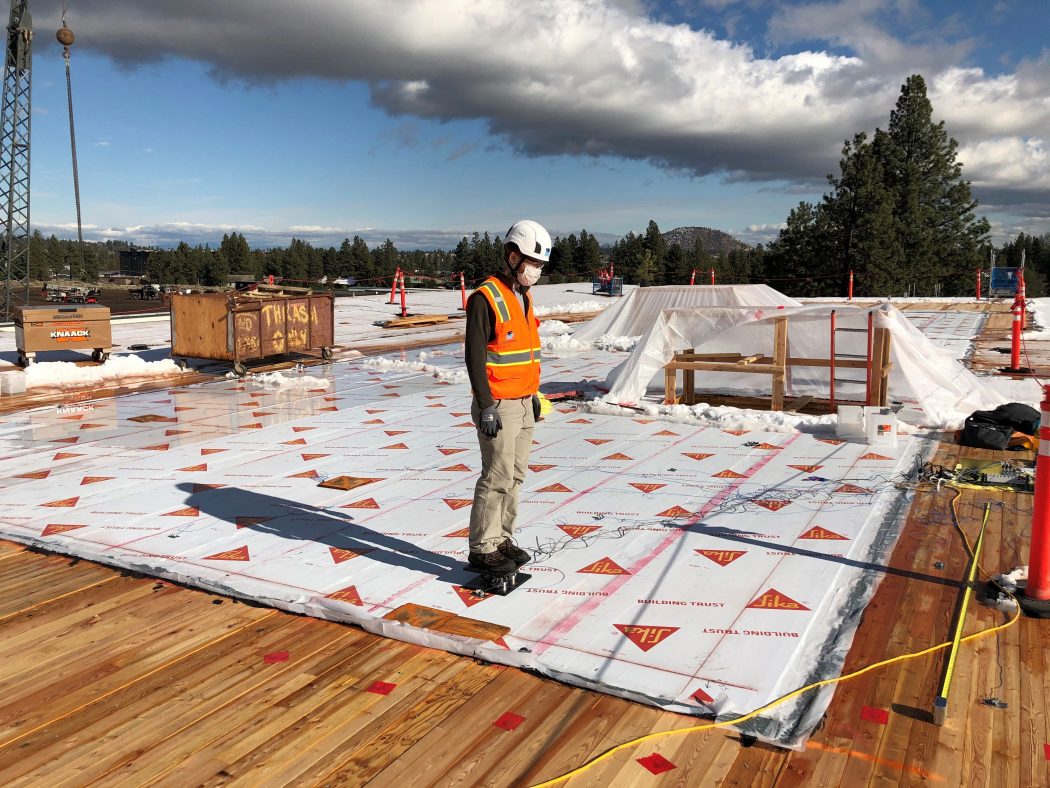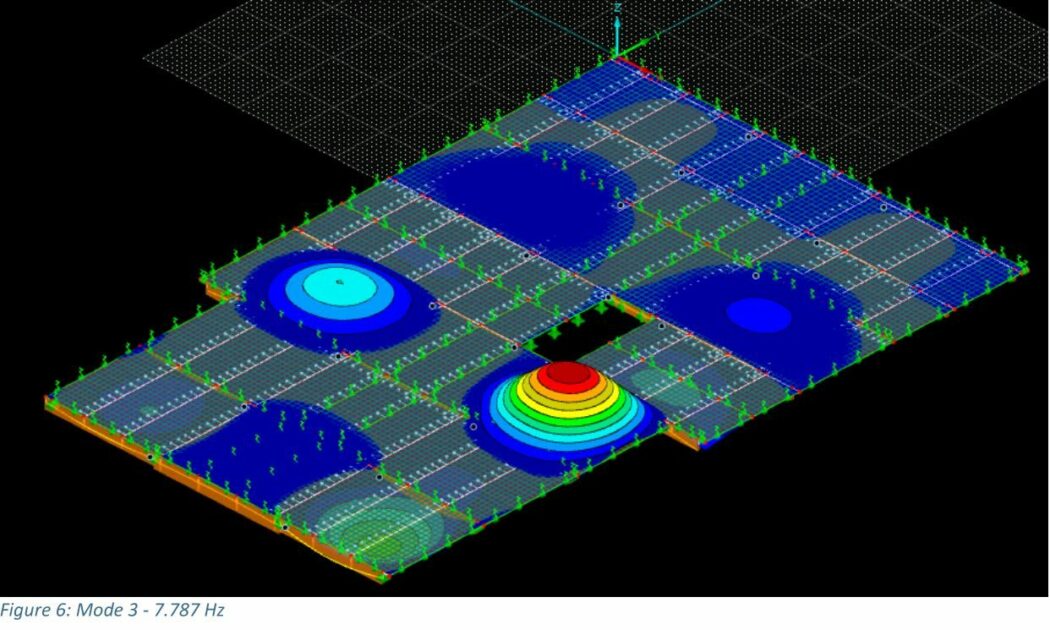
Measuring Vibration to Hone our Designs
Vibration Performance Testing
Overview
At Timberlab, we measure the vibration performance of mass timber floor systems – ones we’ve built, and those built by others. We extrapolate the data and apply performance metrics to our projects to reduce the wood fiber requirements in the structure, yielding significant cost savings.
As mass timber takes the stage alongside concrete and steel, owners and developers seek to understand the relative cost and performance of these structural systems. The industry has addressed structural performance, fire performance, thermal performance, and acoustic performance. Vibration performance, however, has remained relatively unexplored by the AEC community, and conservative designs based on rudimentary calculations often lead to oversized floor systems that make it hard for mass timber to compete.
In certain markets such as healthcare, mass timber could be an obvious choice from an aesthetic standpoint given the physiological benefits of wood, but we have yet to prove that mass timber can cost-effectively meet the stringent vibration requirements of these buildings, which must accommodate sensitive equipment. Needless to say, we believe this topic is ripe for research and innovation.

WHY VIBRATION MATTERS
While vibration is not directly a life safety issue, performance is critical for occupant satisfaction and a sense of safety. Vibration can be caused by outside traffic, mechanical systems, or human activity. When engineering a mass timber structure, vibration is often the governing factor in the design.

TAKING MEASUREMENTS
We perform vibration testing by installing accelerometers on the floor assembly, and then walking and doing “heal drops” on different areas of the floor to excite it. Then we post-process the data to analyze it and compare real-world performance against computer models. Physical testing of full-floor systems helps us calibrate our computer models. We aim to do vibration testing both during construction and once the building is occupied.

VIBRATION MODELING
A finite element model is created in Dlubal structural analysis software. This model determines the modes of vibration, mass participation, and mode shapes that are required to calculate the vibration acceleration and velocity of the floor system in accordance with the Vibration Design Guide.
